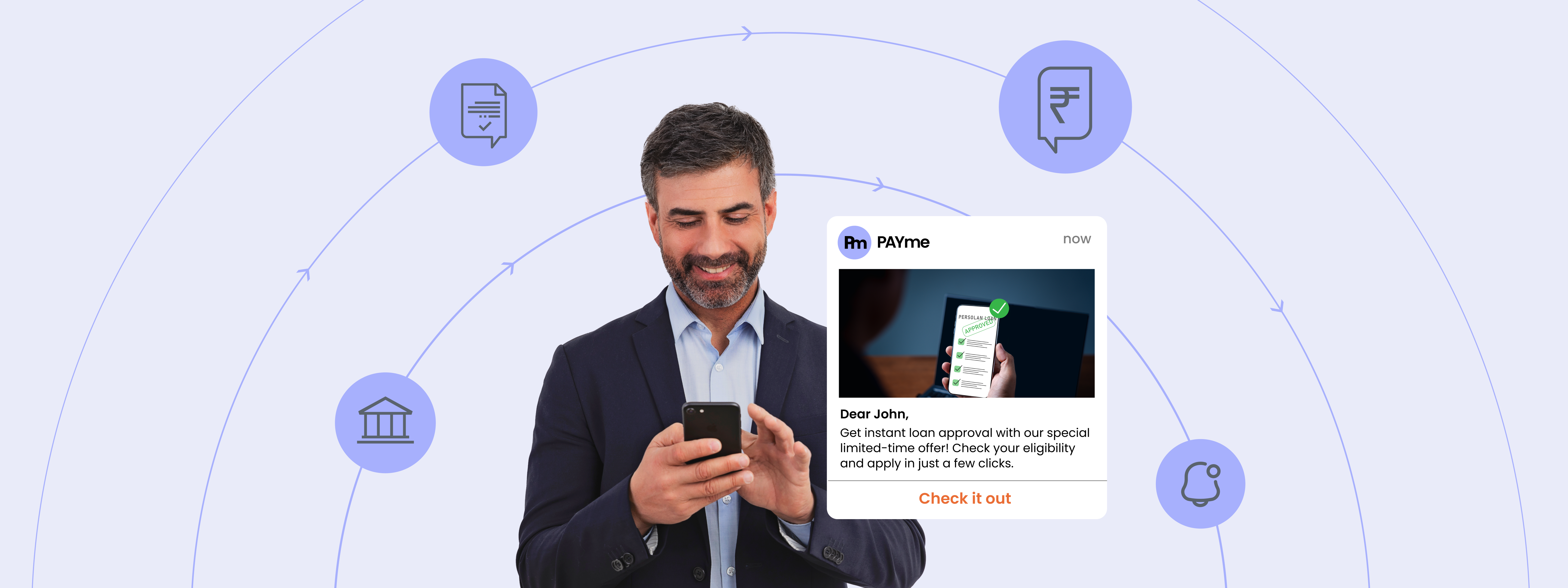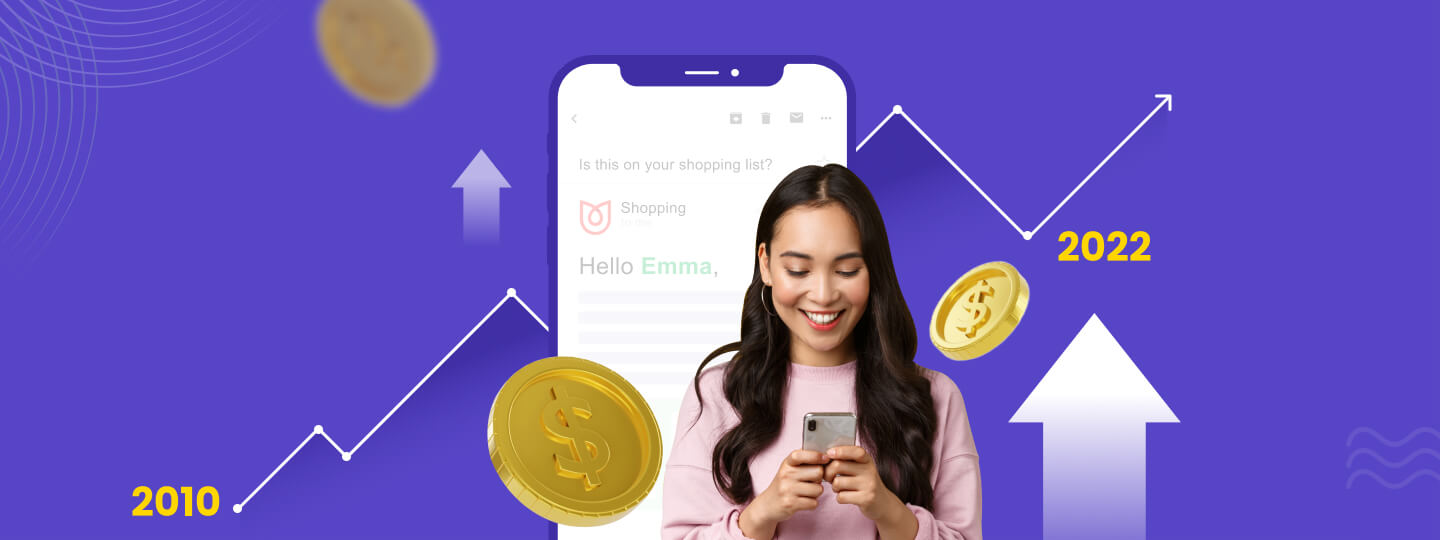As the new-age consumers grow increasingly discerning and constantly explore new brands, it has become more important than ever for businesses to focus on both retaining existing customers and attracting new ones. A recent Euromonitor report on GenZ and millennials show that only 29% of millennials remain loyal to brands, emphasizing the need for a dual approach.
Focusing on customer retention is a powerful way for brands to navigate this challenge. By honing in on the needs, preferences, and desires of their existing customer base, brands can create tailored and personalized experiences that foster long-lasting relationships and drive brand loyalty. This approach not only fuels repeat business but also serves as a potent catalyst for organic growth through word-of-mouth referrals.
However, a common misconception is that slow-moving consumer goods (SMCG) brands need only prioritize customer acquisition, while fast-moving consumer goods (FMCG) brands often face a more balanced emphasis on both customer acquisition and retention. The reality is that customer retention is just as vital—if not more so—for the success of SMCG brands.
Role of digital marketing for slow-moving consumer goods (SMCG)

Often, brands in the SMCG sector place a higher emphasis on offline marketing since a significant 90-95% of their sales are derived from offline channels. The remaining sales is generated through online sources, predominantly e-commerce platforms like Amazon and Flipkart, which are growing at a fast pace. While this skewed distribution may lead some to believe that digital marketing is not essential, it’s crucial to understand that digital marketing is about far more than just facilitating online sales.
Even though a significant percentage of sales occur offline, it’s important to recognize that the initial stages of the customer journey—awareness, interest, and desire—are predominantly influenced by online interactions. At Crompton, we understand that even though a significant portion of sales continues to take place through traditional channels, over 70% of the research & evaluation occurs online. This has prompted us to proactively strengthen our digital presence and build a more robust online footprint.
According to our consumer study, 80% of the consumers begin their purchase journey online, primarily through platforms like Google and Amazon. This shift in consumer behavior has made digital marketing an indispensable tool for brands to reach and influence their target audience effectively.
Additionally, the digitally influenced buyers, notably the significant 80% of millennials who extensively research products and services they consume, typically spend up to 2-3 weeks researching before making their final purchase. This critical window offers brands the opportunity to engage with consumers and guide them through their purchase journey. During this period, brands can provide valuable information, address potential concerns, and showcase their unique value proposition, ultimately shaping consumer perception and preferences. By capitalizing on this opportunity, brands can influence purchase decisions and cater to the needs of today’s digitally savvy consumers.
By leveraging digital marketing strategies such as targeted ads, content marketing, and social media engagement, brands can create impactful online touchpoints that resonate with their target audience. These touchpoints serve to enhance brand visibility, showcase product value propositions, and evoke an emotional connection that drives consumers towards a purchase decision—even if that decision is ultimately executed in an offline setting.
Furthermore, since 84% of in-store and 74% of online buyers are initially undecided on their brand choice, it is more crucial than ever for SMCG brands to capitalize on this opportunity to influence and win over these consumers through effective digital marketing. In essence, digital marketing for SMCG brands is the cornerstone of an integrated marketing approach designed to create a seamless and memorable customer journey that spans both online and offline realms.
For instance, our key strategy at Crompton involves tapping into high-intent audiences while executing high Reach and Frequency (R&F) digital campaigns. We aim to achieve a Share of Voice (SOV) of over 60% on search of our core categories, such as fans, throughout the year. Additionally, we focus on scaling up seasonal categories like air coolers and water heaters during their relevant periods. This approach allows us to effectively target potential customers and maintain a strong presence in the market.
Challenging the Misconception of Retention Marketing

One of the most persistent misconceptions I encounter is the belief that retention marketing is irrelevant for slow-moving consumer goods brands. This misconception stems from the traditional mindset that brands should primarily focus on customer acquisition rather than customer retention, as their products typically have a longer lifespan and may not be repurchased for several years. However, this outdated view fails to consider the potential for cross-selling, upselling, and incremental growth that can be achieved through a well-executed retention marketing strategy.
One of the primary benefits of retention marketing for brands is the increased customer lifetime value (CLTV). By nurturing relationships with existing customers and providing them with personalized and relevant experiences, brands can extend the duration and frequency of customer interactions, thereby increasing the overall value of each customer. This, in turn, leads to a more stable and predictable revenue stream that can fuel long-term growth and profitability.
Moreover, it’s important to note that 26% of in-store buyers and 36% of online buyers look for other offerings from the same brand post-purchase. This presents a valuable opportunity for brands like Crompton, where repeat purchase is low, to engage with customers and showcase their diverse product offerings. By actively engaging with their customer base and promoting other products, these brands can drive incremental sales, increase CLTV, and reinforce their position as a trusted one-stop solution for their customers’ needs.
Another significant advantage of retention marketing is the enhancement of brand loyalty and advocacy. When customers feel valued and appreciated by a brand, they are more likely to remain loyal and recommend the brand to their friends and family. This organic word-of-mouth marketing can be invaluable for the brands, as it not only generates new customers but also reinforces the brand’s reputation and credibility in the eyes of the market.
Furthermore, investing in retention marketing can lead to lower marketing costs in comparison to customer acquisition efforts. It is worth noting that acquiring a new customer can cost five times more than retaining an existing customer. This is because acquiring new customers typically requires a significant investment in advertising and promotions, whereas retention marketing strategies often rely on more cost-effective channels such as email marketing, content marketing, and social media engagement. By prioritizing retention marketing, brands can optimize their marketing spend and achieve a higher return on investment.
For example, a customer who recently purchased a fan at Crompton may not buy another fan anytime soon. However, there are numerous opportunities for us to engage with existing customers and foster long-term relationships.
Through targeted email campaigns, we can provide customers with personalized content such as maintenance tips, information about new product releases, and special offers on relevant products. By offering exceptional after-sales support and customer service, we can further enhance our customer relationship and position ourselves as a reliable and trustworthy partner.
Moreover, depending on the customer’s needs, we can leverage retention marketing to cross-sell complementary products, such as air coolers or other appliances. By actively engaging with our existing customer base and showcasing the value of these additional products, we can drive incremental sales and revenue while also cementing our position as a one-stop solution for all home appliance needs.
Boost Sustainable Growth with Retention Marketing
In today’s fiercely competitive and rapidly evolving D2C landscape, retention marketing has emerged as the secret sauce connecting consumer needs and brand goals. Especially for SMCG brands, retention marketing can drive sustainable growth when utilized effectively.
For this, brands must embrace the power of digital marketing and retention strategies, creating a holistic approach that seamlessly integrates online and offline marketing efforts. This strategic pivot allows brands to cultivate lasting relationships with their customers, fostering brand loyalty and driving increased customer lifetime value. In fact, more than 63% of Consumer Durable sales in FY 2023 are projected to be digitally influenced, highlighting the significant role of digital channels in shaping consumer behavior and decision-making.
In this digital era, it is time for SMCG brands to challenge traditional mindsets and harness the transformative power of retention marketing to secure their place in the hearts and minds of their consumers.
Like Preetika Mehta, you too can accelerate your digital transformation and retention initiatives with WebEngage. Take a demo right away and explore how to implement winning strategies to boost customer loyalty and attain sustainable business growth.


































 Inioluwa Ademuwagun
Inioluwa Ademuwagun
 Vanhishikha Bhargava
Vanhishikha Bhargava




